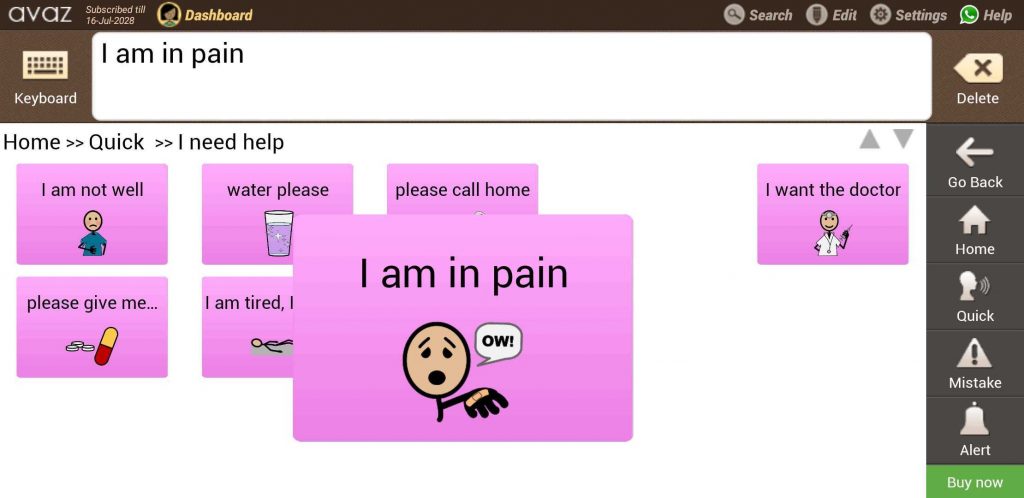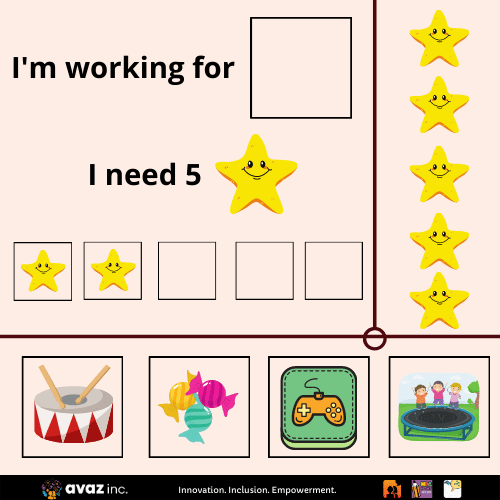Lockdown and school closures have impacted our daily lives in different ways. For some, it means adjusting to chaotic work schedules while for others it may be the struggles in navigating the various responsibilities at home. Talking to others and sharing our experiences can help us deal with our negative emotions. But for those with complex communication needs, expressing feelings may not be easy. So, they may resort to challenging behaviours to let their frustrations and anxieties be known to those around them.
These behaviour issues can be difficult for families to manage and put an enormous emotional strain on them. While families and caregivers focus on helping children, it’s important that they prioritize self-care and make time for themselves. Filling yourself up with positive energy is a pivotal step that equips you to manage the behavioural challenges of children. So, remember to put on your oxygen mask first 😊
Looking at Behaviours as Communication
Instead of identifying behavioural challenges as problems, it’s best if we understood the functions of behaviour. Here’s a table explaining what the child may be attempting to communicate through their behaviours:


Simple Ideas to Manage Challenging Behaviours
There’s a lot we can do to prevent behavioural issues by manipulating the environment of the child.
1.Provide AAC Systems
Children with complex communication needs may struggle with social communication which includes understanding of pragmatics. They may take things literally and may be unable to convey their thoughts effectively. Providing AAC(Alternative and Augmentative Communication) systems can help a great deal for such children. From low tech boards, sign language, objects of reference, to high tech robust AAC systems, children can use any communication mode with which they can make themselves understood better.
Giving them the means to reject/ refuse and protest is very important. Give access to pre-store phrases or single words to communicate their disapproval or sensory issues.


‘Leave me alone’
‘Go away’
‘Stop’
‘Not now’
‘Don’t like it’
‘I need a break’
‘It’s too loud’
‘I’m taking a walk’
‘Want my sensory ball’
2.Use Visual Supports
Children with disabilities can understand visuals better than verbal instructions and guidelines. So, use visual schedules and cues that help them understand expected behaviour. Make sure that there’s no ambiguity on what the expected behaviour is. If you’re using social stories, keep the language simple and use relevant images. Since most children are learning from home, it may be helpful to have a designated area in the house for learning. Get the child involved in decorating the area with stickers of books and school supplies so that they associate the area with learning.
3. Discuss and Create Routines with the Child
All children crave structure because it makes them feel in control. For children with disabilities, structure means predictability, which in turn means reduced anxiety about what to expect in a given day. Get the child’s inputs on how they’d like the day structured. Since learning from home can be hard, it’s ok to be a little flexible. If they can’t handle too many online sessions, a nap or a fun activity between the sessions may not be a bad idea. Make sure the family members and professionals can agree on the routine. Make room within the activity for the child to choose what they want to do. For example, if the child wanted to dance during exercise time or read their favourite book again, acknowledge their requests as much as possible.


4.Assign Chores and Give Rewards
When children are productive, they feel proud of themselves. When their self-esteem grows, they may not try to seek attention through challenging behaviours. So, give children simple household chores depending on their abilities. Set them up for success by assigning simple tasks which they can complete. From setting the table to cleaning their desk, give them small responsibilities. Once they’ve successfully completed a task, praise them and offer rewards that you deem appropriate. Rewards need not be fancy or expensive. It can be your attention, your participation in an activity they enjoy, or tokens and star stickers.
References:
https://www.bbc.com/news/uk-england-suffolk-52545945
https://kidshealth.org/en/parents/coronavirus-autism.html
https://www.familylives.org.uk/advice/primary/behaviour/challenging-behaviour/
https://www.unicef.org/india/media/3401/file/PSS-COVID19-Manual-ChildLine.pdf


